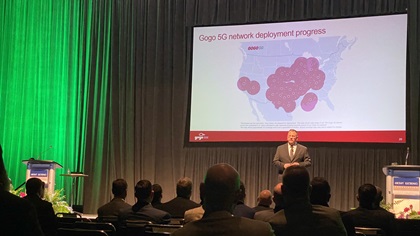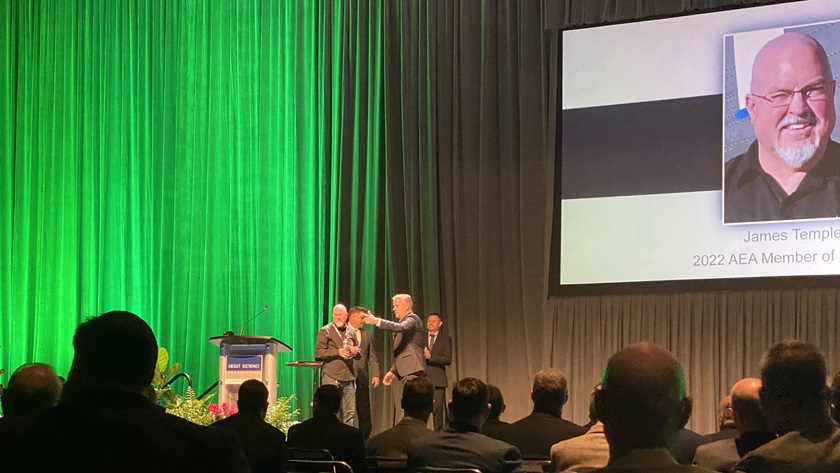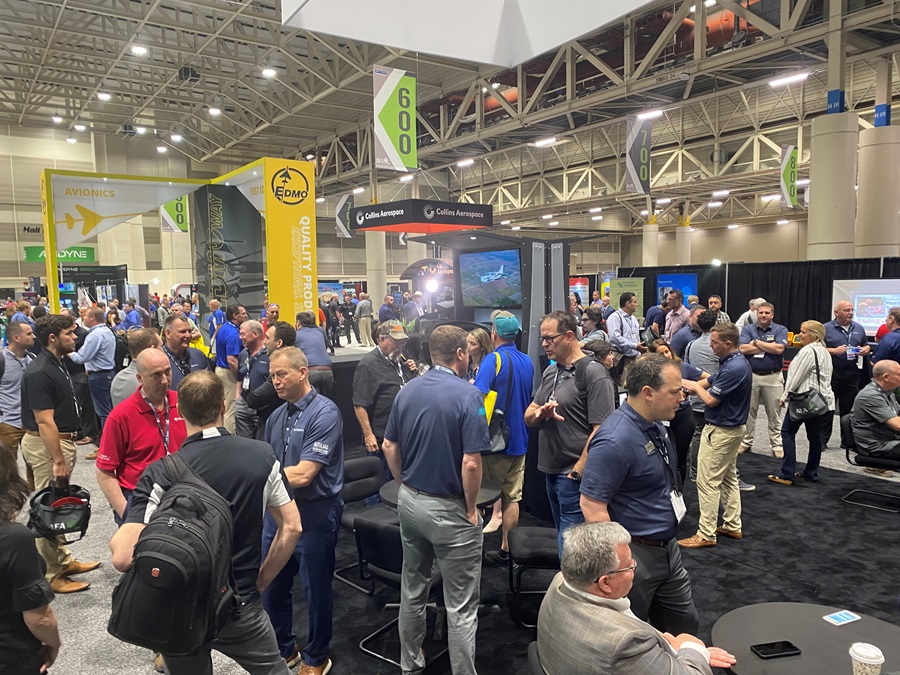Avionics industry regroups in New Orleans
AEA focuses on building for the future
The Aircraft Electronics Association convened in New Orleans on March 28 with international members present at the annual convention for the first time since 2019, though celebration was muted by the reality that a waning pandemic continues to create supply chain headwinds recently made worse by events in Europe.
AEA’s convention occupied a fraction of the vast sprawl of the Ernest N. Morial Convention Center, where preparations for the upcoming NCAA Final Four were underway and a fast-food chain held its own event in adjacent halls and rooms. AEA President Mike Adamson struck a few optimistic notes in his opening remarks, citing a resurgence in aircraft activity, particularly business aviation, as the coronavirus pandemic loosens its grip on much of the world. (Related restrictions including the requirement to show proof of vaccination to dine in city restaurants were lifted days before the four-day event began.)
Being ready to hire and finding qualified people to fill those jobs are two different things, however.
“Inflationary pressures and geopolitical tensions are creating headwinds that will impact installers and manufacturers who were already dealing with constraints in their supply chain,” Adamson said. “On top of all that, we still need qualified technicians.”

AEA’s board recently completed work on a strategic plan to guide the association’s efforts through the coming years, including a new vision: “We are the innovators and the integrators that power safer and more efficient flight,” Adamson said. The new strategic plan also looks to build on the success of an apprenticeship program, establishment of an industrywide certification standard for aircraft electronics technicians, and, moving forward, an effort to entice young people to consider making this work their career.
“We’ll expand our efforts into the classroom,” Adamson said. “We’ll plant more seeds for the next generation, and for our future leaders.”
The need for this kind of outreach was highlighted moments later as David Salvador, vice president of aftermarket sales at Gogo Business Aviation, asked attendees in the auditorium to “make noise” if they belong to a particular generation, starting with the oldest and moving to the youngest. Baby boomers appeared to make the most noise, with the audience response dwindling as Salvador worked his way to younger groups, and finally to Generation Z, at which point the crowd remained virtually silent. If anyone in their 20s was present, they did not speak up.
“They’re making TikTok videos, I guess, right now,” Salvador quipped, pivoting to an issue that emerged as a theme across many of the new product presentations: in-flight connectivity, and rapidly growing demand for in-flight broadband.

Salvador took pains to highlight that the pending arrival of his company’s new in-flight 5G wireless offerings is very distinct from the 5G C-band rollouts by AT&T and Verizon, which prompted the FAA to issue airworthiness directives and notams limiting flights in poor weather by many aircraft equipped with radar altimeters that have been shown to be susceptible to interference from 5G C-band base stations. Gogo’s in-flight 5G service, to be activated later this year, uses frequencies far removed from the C-band (which is adjacent to the frequencies used by radar altimeters), and Salvador said Gogo’s existing in-flight wireless service had just surpassed a milestone: 1 million flights completed by Gogo-equipped aircraft, ranging from Cirrus Vision Jets to Boeing 757s. The first Gogo 5G aircraft installation is scheduled this summer, Salvador said.
“We are on schedule. We’re on budget. We’ve signed our first launch customer, which is Jet Edge,” Salvador said. In-flight 5G will dramatically increase available bandwidth, allowing multiple users to connect from the same aircraft, all able to stream TikTok videos and other content that business customers demand, including videoconferencing that has become a fact of life for people around the world.
The conference opened with new product introductions from 28 other companies, many of them offering their own in-flight connectivity solutions for passengers, flight crew, or both.
AEA also presented its awards for member of the year—James Temple, owner of Temple Electronics, which was founded by his father in 1973 in Arcola, Texas—and the associate member of the year: Garmin, honored for creating automated systems that can land aircraft without human intervention in an emergency.
There is no technological solution to a global supply chain emergency, though Garmin has helped with another of the “headwinds” that AEA is focused on, with the firm’s ongoing support of scholarships to help bring more young people into the industry.





